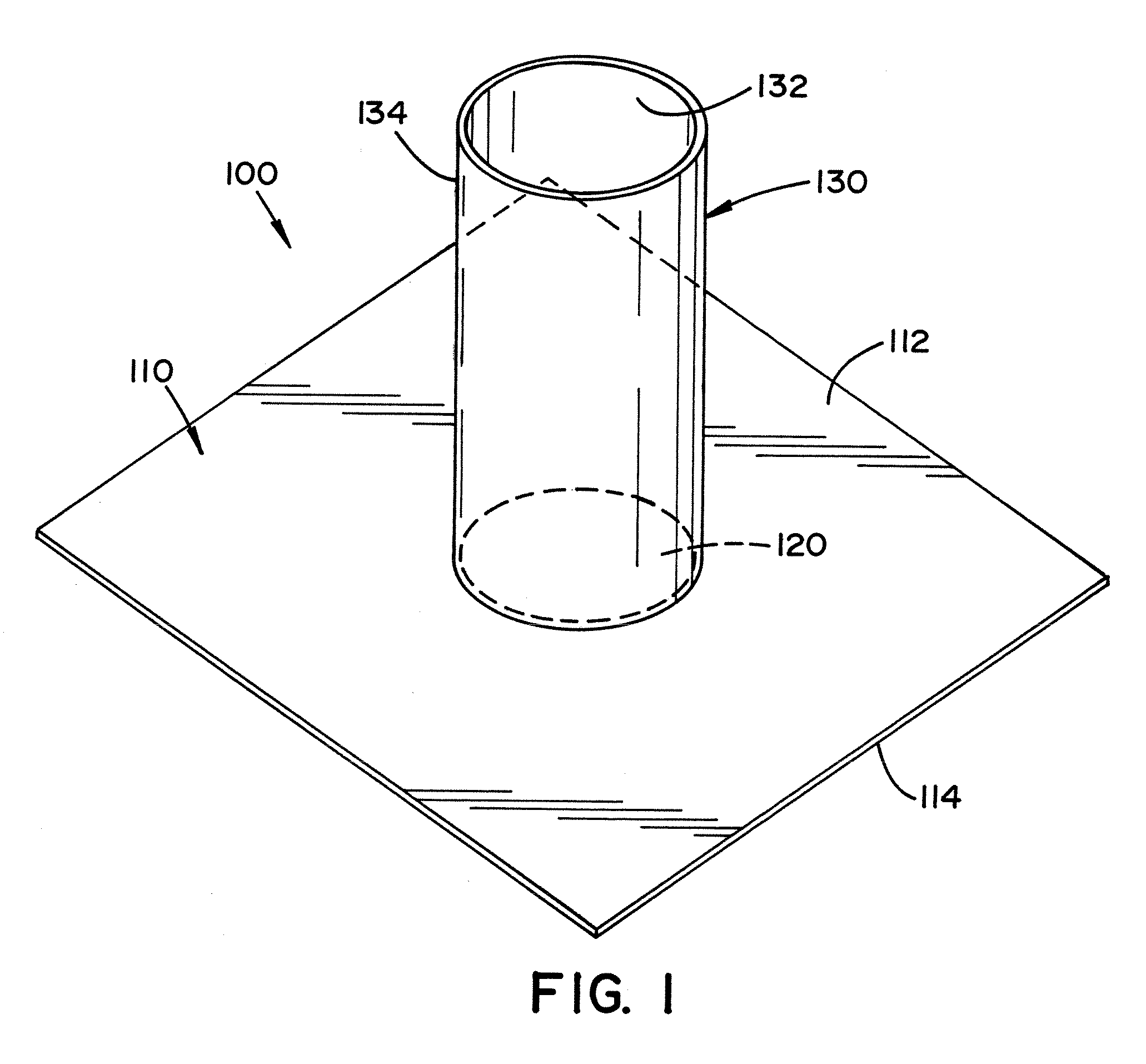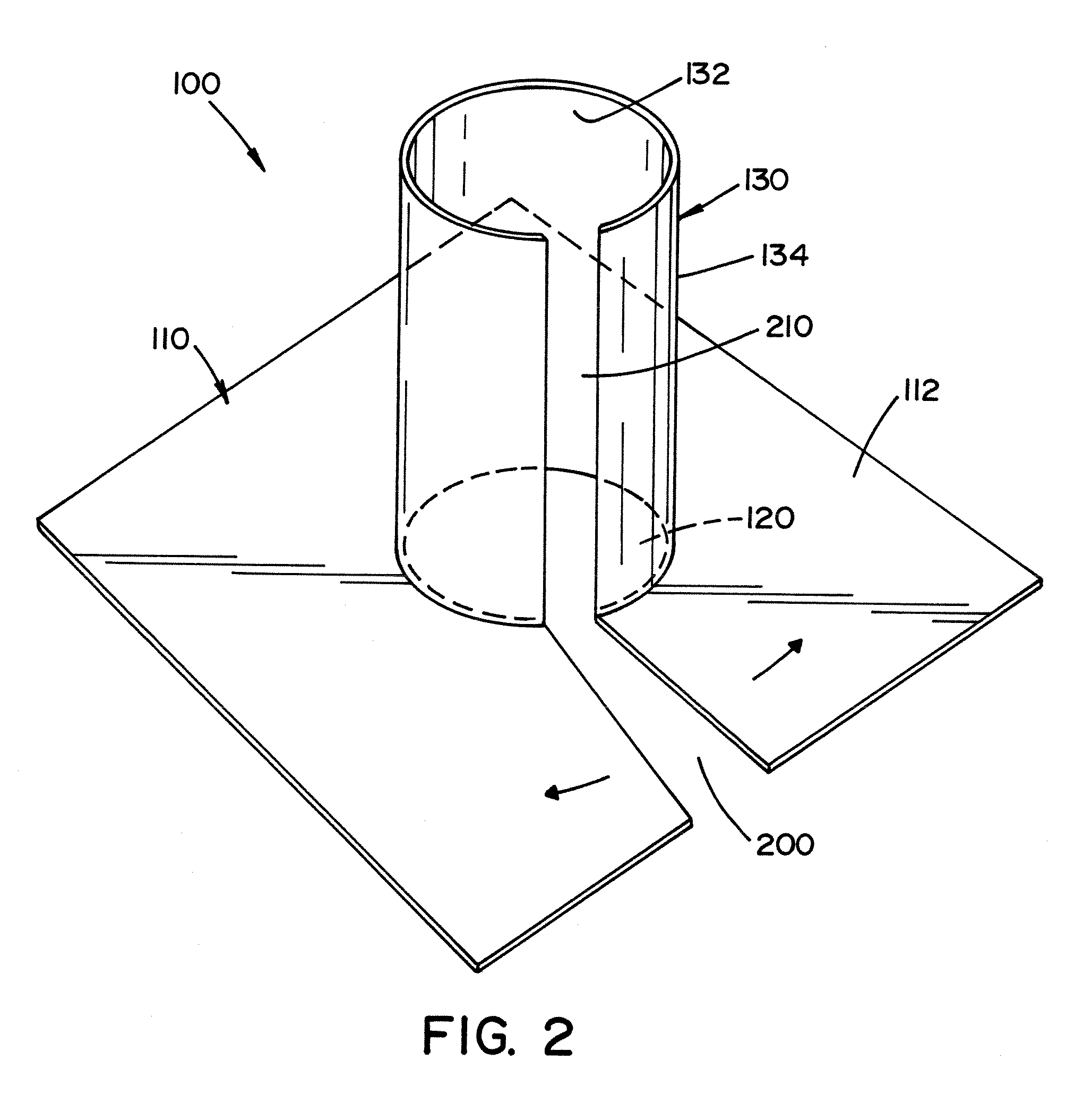Zinc flashing for roof penetrations
a zinc flashing and roof technology, applied in snow traps, manufacturing tools, building repairs, etc., can solve the problems of inability the zinc flashing formed of titanium zinc alloy exhibits the same malleability problems, and cannot be used in-of-the-self to waterproof the region about the roof. , to achieve the effect of facilitating the securing of zinc flashing
- Summary
- Abstract
- Description
- Claims
- Application Information
AI Technical Summary
Benefits of technology
Problems solved by technology
Method used
Image
Examples
example a
[0053]
ComponentWeight Percentzinc91.1-99.99%aluminumup to 0.9%cadmiumup to 0.9%chromiumup to 0.9%copperup to ironup to 0.9%leadup to 0.9%magnesiumup to 0.9%nickelup to 0.9%tinup to 0.9%titaniumImpurities
example b
[0054]
ComponentWeight Percentzinc91.1-99.9%aluminumup to 0.7%cadmiumup to 0.7%chromiumup to 0.5%copperup to 0.7%ironup to 0.5%leadup to 0.7%magnesiumup to 0.5%nickelup to 0.5%tinup to 0.7%titaniumup to 0.12%Impurities
example c
[0055]
ComponentWeight Percentzinc91.2-99.9%aluminumup to 0.5%cadmiumup to 0.5%chromiumup to 0.3%copperup to 0.5%ironup to 0.3%leadup to 0.5%magnesiumup to 0.3%nickelup to 0.3%tinup to 0.5%titaniumup to 0.1%Impurities
PUM
| Property | Measurement | Unit |
|---|---|---|
| thickness | aaaaa | aaaaa |
| thickness | aaaaa | aaaaa |
| thickness | aaaaa | aaaaa |
Abstract
Description
Claims
Application Information
 Login to View More
Login to View More - R&D
- Intellectual Property
- Life Sciences
- Materials
- Tech Scout
- Unparalleled Data Quality
- Higher Quality Content
- 60% Fewer Hallucinations
Browse by: Latest US Patents, China's latest patents, Technical Efficacy Thesaurus, Application Domain, Technology Topic, Popular Technical Reports.
© 2025 PatSnap. All rights reserved.Legal|Privacy policy|Modern Slavery Act Transparency Statement|Sitemap|About US| Contact US: help@patsnap.com



